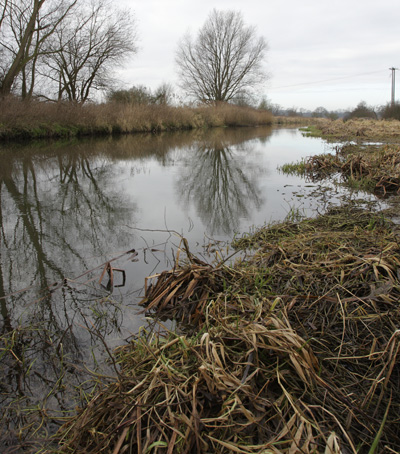Environment Agency fish biologist Helen Beardsley has been researching the growth rate and decline of roach in the non-tidal River Wensum and her conclusions seem to suggest that changes to clean up the river may, in fact, have resulted in a major loss of a prime food source which, in turn, has lead to a decline in growth rate and lessened the ability of juvenile roach to over-winter.
 The presence of excess phosphates in our waterways has long been considered a major source of aquatic pollution, particularly in lowland regions where it has resulted in massive eutrophication – an excess of plant nutrients, primarily the normally limiting phosphate – and a consequent bloom of algae, usually to the detriment of the higher plant species.
The presence of excess phosphates in our waterways has long been considered a major source of aquatic pollution, particularly in lowland regions where it has resulted in massive eutrophication – an excess of plant nutrients, primarily the normally limiting phosphate – and a consequent bloom of algae, usually to the detriment of the higher plant species.
Phosphates primarily enter our river systems via sewage works but the technology of stripping out the phosphate element of treated water before it is returned to our rivers is a technology which is now well-established and is being increasingly called for by environmentalists to return the clarity and abundance of higher plants in our rivers.
However, this current research suggests that phosphate stripping from major sewage works serving the River Wensum catchment area has resulted in a reduction in algae, as planned, but this reduction in algae has had a further consequence in that it is the prime food source for zooplankton, particularly Daphnia, which are the prime food source for young fish and zooplankton populations have diminished massively – leaving the fish without their key food resource.
Helen summarised:
“Roach growth rates in the River Wensum were found to be significantly higher prior to phosphate stripping; subsequently growth was reduced. Phosphate is responsible for algal productivity within rivers and, by removing this to improve water quality, the food source for fish is removed – although the river is actually cleaner than it was during the prime roach decades of the 1960s and 1970s.
Where Zooplankton biomass is minimal roach have are forced to consume algae, proven to be less nutritious than animal prey particularly for juveniles requiring vital growth before the onset of colder water temperatures. By removing phosphate to improve water quality the food source of these fish is removed and roach have declined in growth and quality since the onset of phosphate stripping.”










